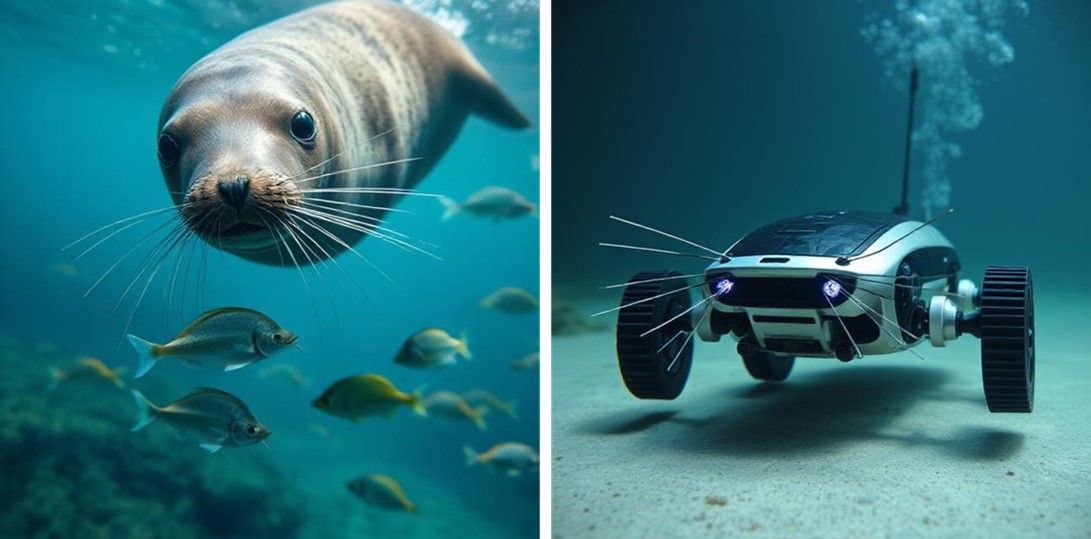Exploring Active Whisking Behavior in Seals Through Soft Robotics: Development of a Seal-Whisker-Inspired Sensor for Underwater Exploration
Nature has long served as an inspiration for technological innovation, with countless biological systems offering elegant solutions to complex problems. Mimicking nature has enabled groundbreaking progress in fields ranging from materials science to robotics. One particularly fascinating area is underwater sensing, where marine animals like seals demonstrate extraordinary capabilities that engineers strive to replicate.

Seals are remarkable marine mammals known for their ability to explore and hunt in dark, murky underwater environments where vision is limited. The exceptional sensory capability is attributed to their highly sensitive whiskers, which can detect minute water disturbances generated by the movement of prey. Remarkably, studies have shown that seals can follow the hydrodynamic trail of a fish upto 180 meters away. Interestingly, similar to terrestrial animals like rats and cats, seals also actively move (whisk) their whiskers during exploration. The dynamic whisking is believed to enhance the sensitivity of the whiskers. Despite its importance, the functional significance of whisking in seals remains largely unexplored.
In our work, we are developing artificial muscles that mimic natural whisker movements to better understand the role of active whisking in seal sensory behavior. This research is being carried out as a collaboration between the University of Groningen and the Seal Rehabilitation and Research centre, Lauwersoog, Groningen, Netherlands. The project not only deepens our understanding of seal biology but also paves the way for bioinspired underwater robotic sensing technologies.

